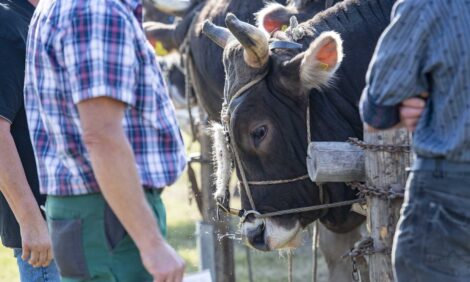



Why is China Attracting Global Beef Exporters?
ANALYSIS - The growth of the Chinese economy, the growth and urbanisation of the population and the increasing wealth among consumers in China is providing a lucrative market with huge potential for the global meat sector, writes Chris Harris.The development and the possibilities that the Chinese market holds for exporters around the world was spelt out at the recent World Meat Congress.
And over the last week both the US and the UK have seen market opportunities open up for both beef and lamb for the UK.
The USDA has announced that the Hong Kong market has reopened for US beef and following the Chinese president’s visit to the UK, discussions are underway for beef and lamb exports worth £120 million a year.
However, the beef market in China in particular is very hazy and blurred.
According to Joel Haggard from the US Meat Export Federation in South East Asia there is a change in Chinese consumption tastes emerging with a growth in dairy products gaining on the Chinese traditional preference for pig meat.
In the beef sector, USDA figures show production in China of 5.74 million tonnes. The Chinese data put the figure about 1 million tonnes higher at 6.73 million tonnes.
“But it is very difficult to account for 6 million metric tonnes of beef,” said Dr Haggard. “Imported beef has started to enter the markets as Chinese beef.”
According to Dr Haggard there is a well-known grey market in beef in China that exists despite the efforts of the authorities to crack down and stop it.
Much of the beef that is entering China is coming up either through Viet Nam, with Indian and Australian exports taking a large share of this route and through Hong Kong, where the US has now also managed to gain access.
Although a lot of the beef is being consumed on the Vietnamese market, some is reaching China.
The most apparent route for grey market imports of beef into China appears to be through Hong Kong, because, Dr Haggard said, if all the beef that is entering Hong Kong is consumed there, it would give the population a consumption rate of 100 kg per person per year.
With imports of beef from India, Brazil and the US banned from China, most of the officially imported beef comes from Uruguay, New Zealand, Australia, Canada and Costa Rica.
The Chinese market for global beef exporters has also become more attractive over the last decade because of the sharp rise in prices.
Since 2000 beef prices have risen fivefold going up with GDP. The cattle herd has risen by 44.3 per cent and beef output has increased by more than 2000 per cent, but China still needs to import beef to satisfy the growing demand.
Production, while growing, is still fragmented with the top six companies only producing 2.2 per cent of national slaughter.
The beef sector in China is behind pig and poultry largely because of the way that the subsidy system in the country has operated. While pig and poultry meat have received subsidies, up until now subsidies for the beef sector have been on a local basis.
There is now a national subsidy scheme that will run out in three provinces aiming to increase production by 1 million tonnes by 2020, but this subsidy only totals 1.7 billion RMB.
It has been estimated that by 2020, 40 per cent of the beef supply will come from farms that market 50 head of cattle or more a year.
Dr Haggard said that while the dairy industry in China is starting to see a lot of investment, it is uncertain how many people are investing in beef in the country.
However, the sector is expected to see consolidation and there is also potential to see a large scale growth in live imports.







